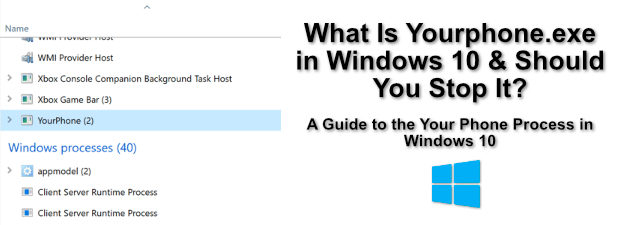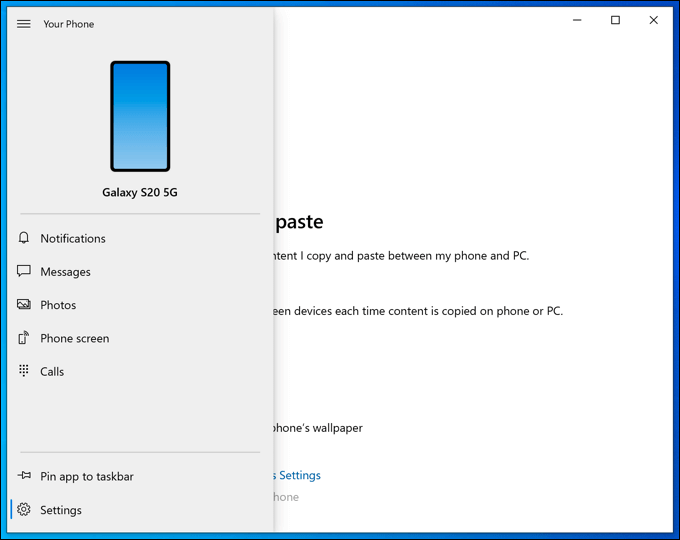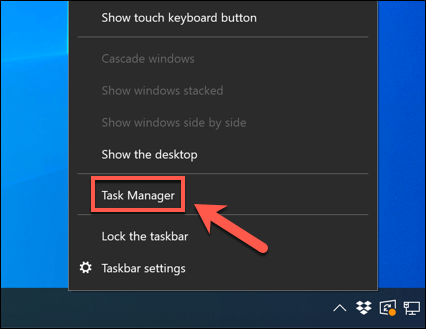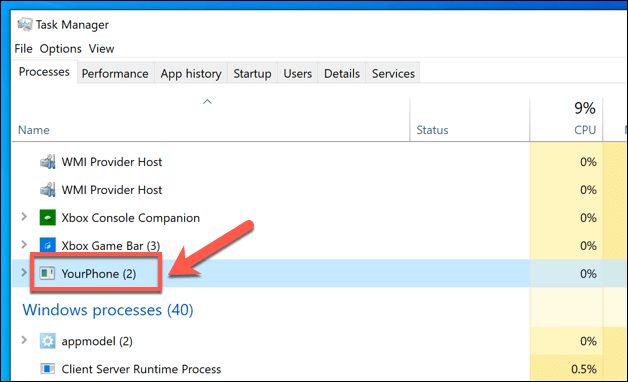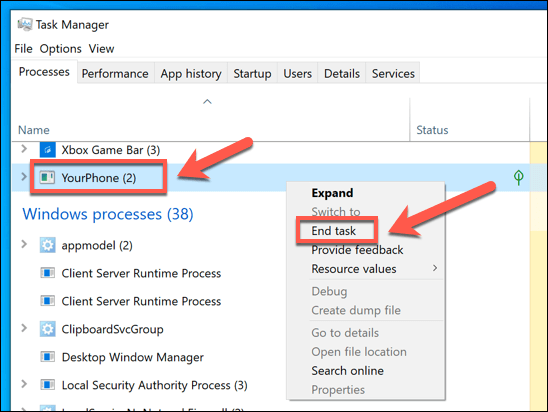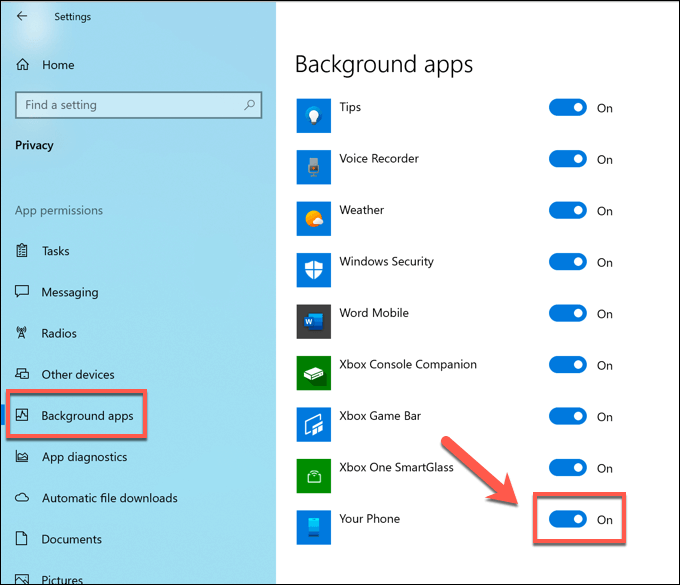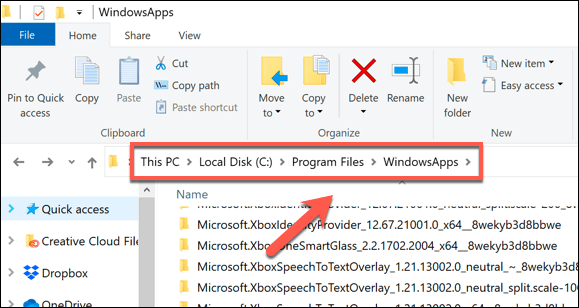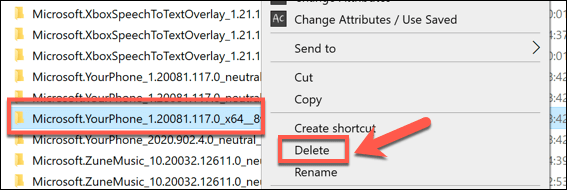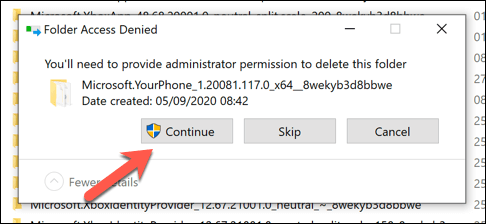Windows has various system processes and apps, but most of them probably aren’t familiar to you. One process you might not have heard of is yourphone.exe. Unlike other system processes like svchost.exe, yourphone.exe is a new system process that’s been introduced in Windows 10. Here’s everything you need to know about it.
What Is Yourphone.exe and Should You Disable It?
If you see the yourphone.exe process (or similar) running in Windows Task Manager, then you’re running Windows 10 and you have the Your Phone app running in the background. The Your Phone app is a relatively new Windows feature that allows you to sync your Windows device with an Android smartphone or tablet running Android 7 or later. It allows you to read your device notifications, including incoming messages, without looking at your Android device directly. If you’re an iPhone or iPad user, you can still use the Your Phone app, but you’re limited to browser link sharing, with no other features currently available. You’ll need Microsoft Edge installed on your iPhone or iPad to be able to do this. You can also share files and images between your devices, reply to text messages from your PC, and more. It’s a Microsoft app, so it’s entirely safe for you to keep running on your PC. However, if you want to disable it, you can. You can manually stop the yourphone.exe process in Windows Task Manager, or you can prevent it from running in the background in Windows Settings. You can also remove it entirely using the Windows PowerShell.
How to Manually Stop the Yourphone.exe Process
If you think the yourphone.exe process is running on your PC and you want to stop it, you can do so manually using Windows Task Manager. This will end the running process until the next time you reboot or until you open the Your Phone app manually. If you’re using Your Phone features, this will prevent the app from working in the background. You won’t get notifications or messages synced across from your Android device until the app is opened again.
Disabling the Your Phone App in Windows 10
Ending the yourphone.exe process will only stop the app from working until you reboot. If you want to stop it from automatically loading in the background when you restart your PC, you’ll need to disable it in your Windows Settings menu. Once disabled, the Your Phone app will no longer be able to run in the background. The next time you reboot your PC, the app will no longer appear in the Windows Task Manager process list until you open the app yourself. If you never use the app, the app will never appear unless you open it. This will leave it disabled but ready to use, should you change your mind in the future.
Removing the Your Phone App (Yourphone.exe) using Windows PowerShell
Disabling the Your Phone app by stopping it from running in the background will leave it effectively disabled, but you’ll still be able to open it manually. If you want to remove it completely, you’ll need to use the Windows PowerShell to do so. While it isn’t typically advisable to remove built-in Windows components, it’s safe to remove this app. It isn’t a core system component, so it shouldn’t impact on any other features. Removing it will stop you from syncing your Android device with Windows, but you can reinstall the app from the Microsoft Store later. If the command is successful, the folder (and all files contained within) should be deleted. If the command returns an error, make sure that the Your Phone app isn’t still running, then use the -Force tag at the end of the command to force Windows to delete all of the Your Phone files.
Understanding Essential System Processes in Windows 10
Other system processes, like msmpeng.exe, are considered vital components of your Windows 10 installation, and stopping or removing them would cause Windows to stop working. Thankfully, the Your Phone app isn’t as essential, so if you do want to remove it, you can, although it’s better to simply disable it and leave it in place. If you’re worried about processes in Windows Task Manager that you aren’t familiar with, then you should probably scan for malware to make sure your PC is still secure. If you don’t have antivirus protection installed, then there are plenty of free antivirus removal tools you can use instead, including the built-in Windows Security tool.
